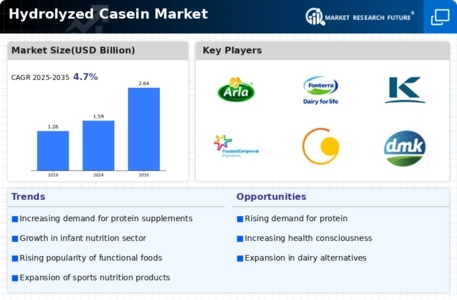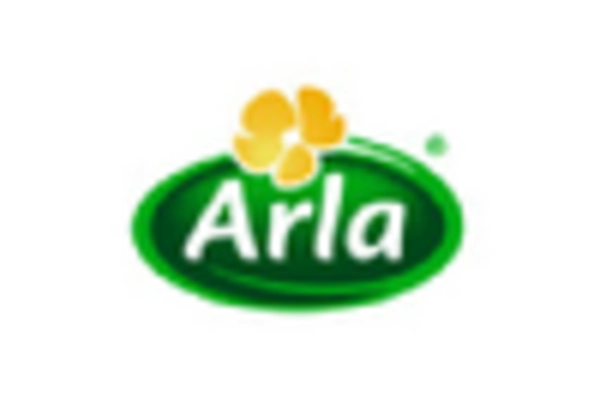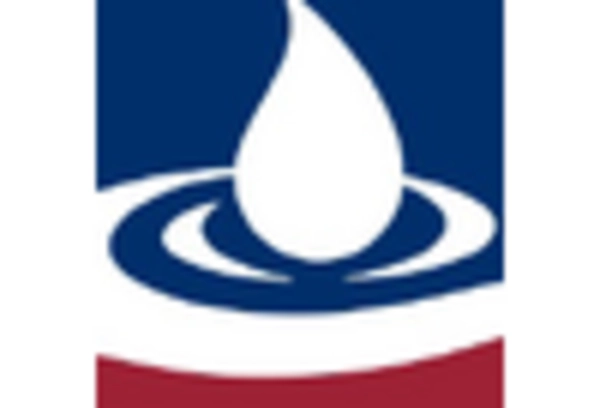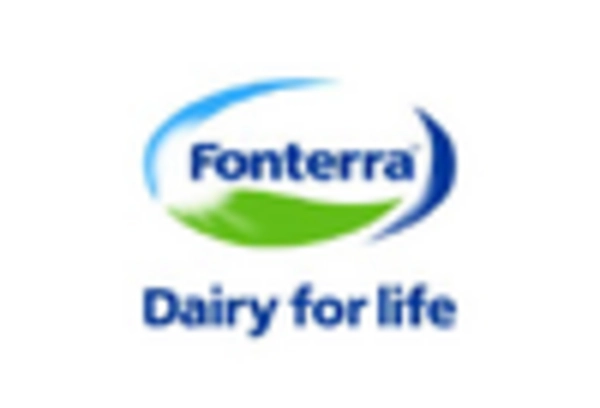Increasing Health Consciousness
The Hydrolyzed Casein Market is experiencing a notable surge in demand due to the increasing health consciousness among consumers. As individuals become more aware of the nutritional benefits associated with protein intake, the preference for high-quality protein sources, such as hydrolyzed casein, is on the rise. This protein variant is known for its rapid absorption and digestibility, making it particularly appealing to athletes and fitness enthusiasts. According to recent data, the protein supplement market is projected to grow significantly, with hydrolyzed casein playing a pivotal role in this expansion. The emphasis on health and wellness is likely to drive further innovation in product formulations, thereby enhancing the appeal of hydrolyzed casein products in the market.
Growth of Sports Nutrition Sector
The Hydrolyzed Casein Market is benefiting from the growth of the sports nutrition sector, which is characterized by an increasing number of individuals engaging in fitness and athletic activities. Hydrolyzed casein is recognized for its ability to provide sustained protein release, making it an ideal choice for post-workout recovery. As the sports nutrition market expands, driven by a growing fitness culture, the demand for hydrolyzed casein products is expected to rise. Market analysis suggests that the sports nutrition segment is likely to see a compound annual growth rate that supports the overall growth of the hydrolyzed casein market, as consumers increasingly seek effective recovery solutions.
Rising Demand in Infant Nutrition
The Hydrolyzed Casein Market is significantly influenced by the rising demand for specialized infant nutrition products. Hydrolyzed casein is often utilized in infant formulas due to its hypoallergenic properties, making it suitable for infants with milk protein allergies. The increasing awareness among parents regarding the nutritional needs of their children is driving the demand for such specialized products. Market data indicates that the infant formula segment is projected to witness substantial growth, with hydrolyzed casein being a key ingredient. This trend is likely to continue as more parents seek out products that support their infants' health and development.
Technological Advancements in Production
Technological advancements in the production processes of hydrolyzed casein are contributing to the growth of the Hydrolyzed Casein Market. Innovations in enzymatic hydrolysis techniques have improved the efficiency and quality of hydrolyzed casein, resulting in products that are more palatable and nutritionally beneficial. These advancements not only enhance the functional properties of hydrolyzed casein but also allow manufacturers to cater to diverse consumer preferences. The market is witnessing an increase in the availability of hydrolyzed casein in various forms, including powders and ready-to-drink formulations. This diversification is expected to attract a broader consumer base, further propelling the market forward.
Regulatory Support for Nutritional Products
The Hydrolyzed Casein Market is also influenced by regulatory support for nutritional products, which is fostering a favorable environment for market growth. Governments and health organizations are increasingly recognizing the importance of protein in diets, leading to the establishment of guidelines that promote protein consumption. This regulatory backing is likely to encourage manufacturers to innovate and expand their product offerings in the hydrolyzed casein segment. As regulations evolve to support health and nutrition, the hydrolyzed casein market may experience enhanced credibility and consumer trust, further driving its growth in various applications, including dietary supplements and functional foods.


















Leave a Comment